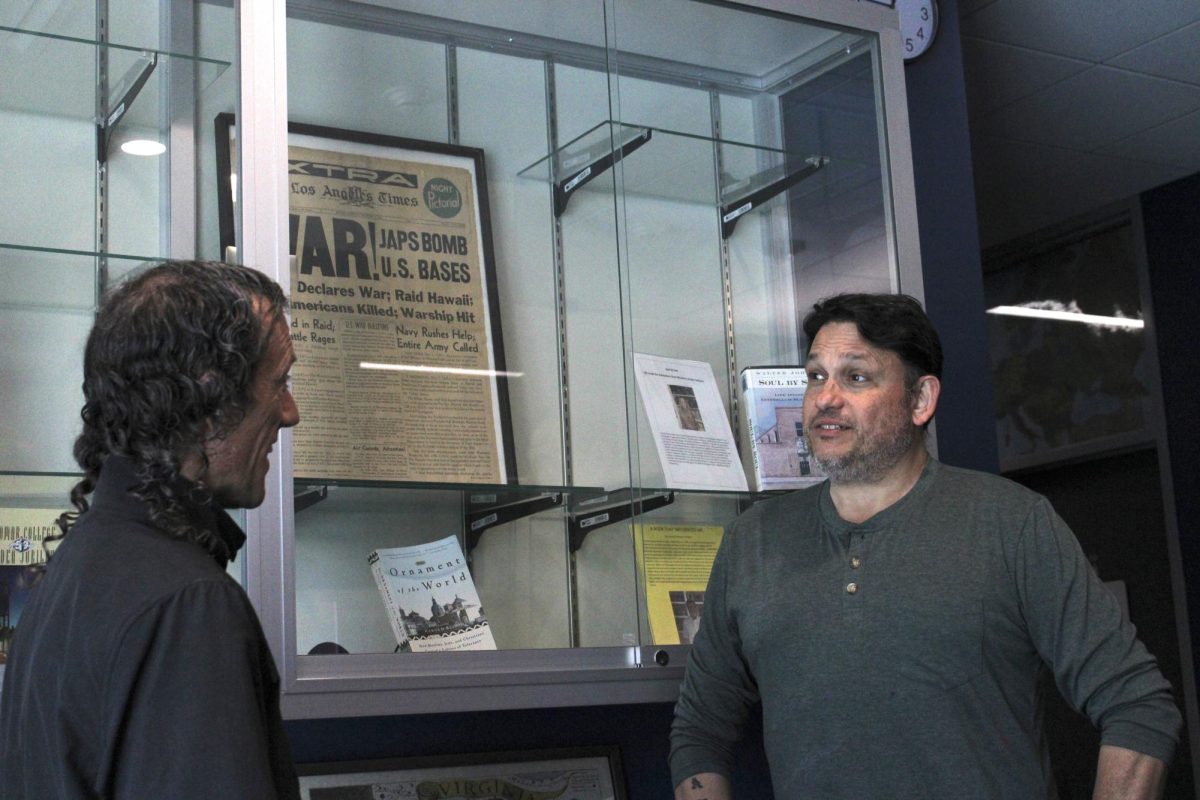There are key differences that exist between Palomar College and other California community colleges when it comes to processes and procedures regarding the student activities fund since each college has discretion in how funds are procured and administered.
Palomar College, like many other community colleges, offers benefits for those who purchase a student ID card or activities card. The benefits range from complimentary printing and food to transportation discounts and specialized event incentives.
The revenue generated from the cards goes into the OSA student activities fund. A portion of the funds provide for the benefits advertised by the OSA and for various events on campus.
Additionally, faculty and staff can request for funds out of the student activities budget for their own purposes simply by filling out a form and submitting it to the Office of Student Affairs.
Once a funding request has been submitted, Sherry Titus, director of the OSA, in consultation with her colleagues in the office, will decide whether or not to fund the event. At Palomar, students play no role in the decision process.
This makes Palomar different from the other California community colleges, where students are the primary arbiters in determining if events are to be funded.
At San Diego City College the ASG votes on each and every proposal during its meetings. The proposal is put on the agenda, discussed, and voted upon.
At Mira Costa College, there are two mechanisms; the first is an open enrollment period where various groups can submit proposals and the ASG will debate and vote on all proposals to determine whether or not it wishes to fund the various events. The second mechanism operates similarly to San Diego City College; a proposal is submitted and the ASG will discuss and vote on each proposal at the meeting.
Saddleback College will decide to disburse its funds at the beginning of the academic year by fielding requests from various groups on campus. The ASG will then decide whether or not to fund an event and will aggregate all of those events to lay out its budget for the coming academic year.
Furthermore, the Saddleback’s ASG allocates funding to the different academic departments and faculty can obtain funds by simply asking their respective department heads.
Not surprisingly, the amount of revenue generated from the sale of the card differs as well.
According to Titus, Palomar on average will sell 11,000 cards every academic year, yielding $165,000 in revenues.
Contrast that with Saddleback, which sells 6,500 cards at $10 per student, yielding $65,000 per academic year. While Mira Costa sells 2,600 cards at $5, generating $13,000 worth of revenue. Palomar’s revenue numbers dwarf those of Saddleback and Mira Costa, but it is the administrative costs that make Palomar stand out.
Lindsay Kretchman, Palomar’s student activities coordinator, is paid directly out of the revenues generated from the sale of these cards. Out of the $165,000 the optional fee generates, $91,000 goes to pay Kretchman’s salary and benefits. Another $20,000 to $30,000 goes to pay student workers.
In total nearly 75 percent of the revenues that were generated goes to administrative salaries and benefits.
But at Saddleback and SDCC salaries are paid from an alternative funding source.
“Myself and the administrative assistant are paid from the college itself; the office assistant is paid from our contract revenue that comes in, that other funding source. And then we have a number of student assistants in the office and they are either paid by federal work study or from contract revenue,” said Audra DiPadova, the director of student life at Saddleback.
Mira Costa does pay for one classified staff member, the ASG secretary, out of its student activities budget. But Mira Costa’s student senate authorized for that salary to be paid out of the budget. Unlike Palomar, students at Mira Costa chose where their money was going.
Furthermore the type of benefits and the magnitude of these benefits can differ widely from one community college to another.
At Saddleback, for example, purchasing a card affords students priority status during social events that the college organizes. This status provides students with free food as well as priority seating at plays and concerts.
Like Palomar, Saddleback gives discounts for purchasing the card, but the discounts offered by Saddleback are far greater than that of Palomar.
“The discount booklet is worth over $400 in local discounts,” DiPadova said. That is double the amount that Palomar’s more expensive card offers. “It also includes discounts on athletics events and fine arts events at the college,” DiPadova added, “they get 10 percent off their cafeteria purchase, 10 percent off their coffee cart purchase at the campus, and 10 percent off non-textbook, non-software items.”
According to Jim Gonzales, Mira Costa’s director of student services, their card provides discounts as well. It also provides for social events throughout the semester. The college hosts cultural events on campus where students can learn more about its student body and enjoy free food and drinks as they take in the sights of the event.
Michael Wong, the dean of student affairs at SDCC, confirmed that its students receive a complimentary planner at the beginning of the semester and other supplies that aid in their success. Additionally, students can receive a free copy of their transcripts.
Despite these differences, Palomar College defends its current practices.
Kretchman’s salary is paid out of the students activities budget because she is the one responsible for making sure the events run smoothly and the student workers are needed to administer the ID card program. They are also available for cleanup after an event has been completed.
And as far as student input is concerned Titus responded with the following:
“No, and again why should they? This (showing the card’s benefit pamphlet) is what they’re funding right here … It doesn’t say that you’ll have assistance with determining outside funding for projects that is in excess of what we need,” Titus said.







